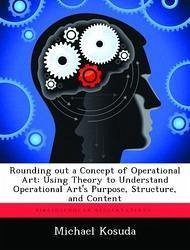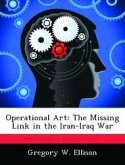This monograph posits that military practitioners have a theoretical and doctrinal gap in understanding operational art. This threatens to separate tactical action from strategic purpose resulting in battlefield success that is orphaned by strategic frustration. To address this situation, this monograph proposes a theory of operational art, tempers it with historical case studies, and evaluates both Joint and Army doctrine. It demonstrates that, while operational art cannot overcome severe policy/strategic faults, it is necessary to successfully organize tactical action to achieve strategic aims. After describing both military strategy and tactics, this monograph proposes that the purpose of operational art is to bridge these two qualitatively different functions. To accomplish this operational art must bridge the conceptual-physical divide, negotiate boundaries, use tactical culmination to serve continuation, and manage political interaction. To accomplish this, operational art needs to have a structure that can understand strategic purpose, generate an operational logic, negotiate boundaries, and control tactical units. This four-part structure is the chain that links strategic purpose to tactical action. Three historical case studies provide insight into the functioning and limitations of the theoretical model. Major General Scott's Mexico City campaign (1847) provided an example of the successful application of operational art and that all four parts were necessary to successfully link strategic purpose to tactical action. General Westmoreland's introduction of ground combat forces into Vietnam (1965) demonstrated that poor application of operational art can lead to tactical action that does not contribute to strategic goals. It also provided an example of the limitations of operational art. It demonstrated the primacy of policy and strategic direction over operational and tactical capability. Finally, General Schwarzkopf's Operation Desert Storm (1991) demonst
Hinweis: Dieser Artikel kann nur an eine deutsche Lieferadresse ausgeliefert werden.
Hinweis: Dieser Artikel kann nur an eine deutsche Lieferadresse ausgeliefert werden.








